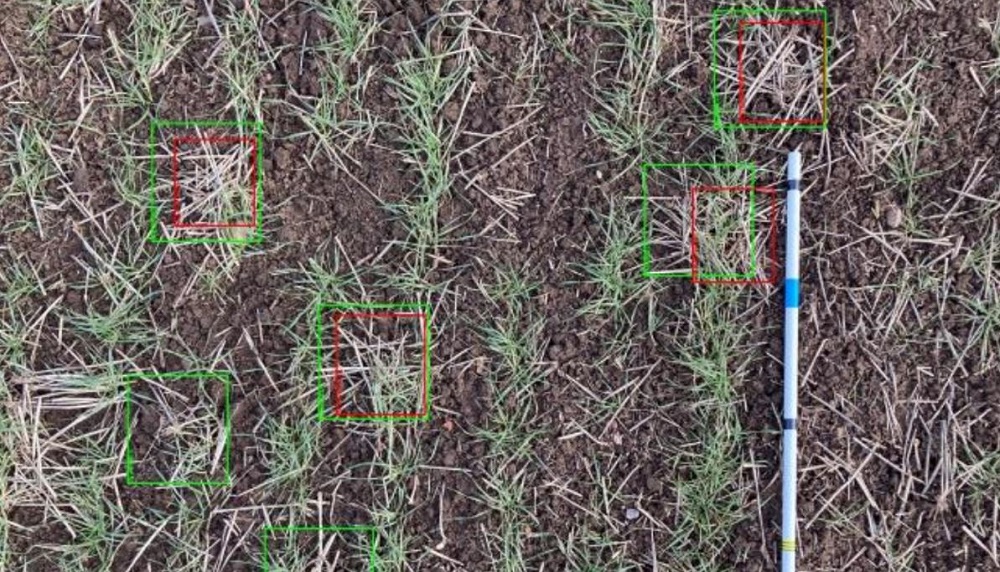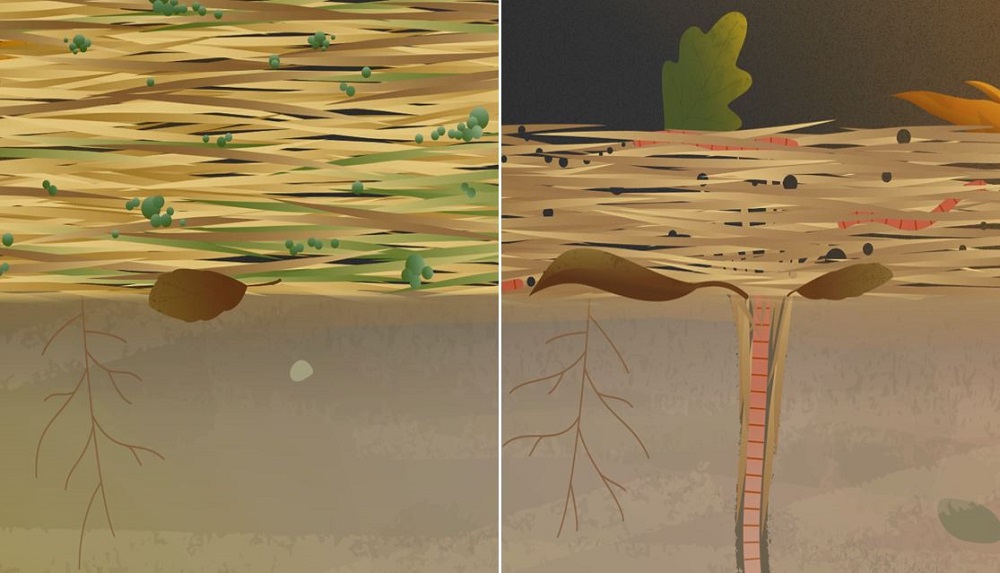Earthworms: a crop disease biocontrol?
Friday, 17 June 2022
With many farmers practicing reduced cultivations, it is good news for earthworms. But is it beneficial for all other soil life, such as crop disease pathogens? Maybe not, according to researchers.
The long-held wisdom is that the plough can be a good disease management tool. Its disruptive action buries infected crop residues and disrupts pathogen development.
However, with a move towards less-intensive cultivation practices, is it time revisit the guidance and look at disease management from a different angle?
A research team from SRUC and the University of Nottingham certainly thinks so.
Dragging blades through soil is not good for earthworms and this may have implications for crop diseases.
Earthworms (Lumbricus terrestris) provide well-documented benefits to soil health. Yet, their role as a naturally occurring biocontrol for crop disease is likely to be underrated.
They are voracious feeders of plant residues, including material colonised by fungi. There is even evidence that earthworms may selectively feed on material colonised by phytopathogenic species.
As a result, earthworms are likely to contribute to pathogen control in the field.
However, how valuable is this contribution? Well, European research shows that earthworms can help decrease on-farm production costs and fungicide dependencies with an estimated value of £59/hectare.
It is why the team investigated the potential for earthworms to control UK crop diseases, with their findings detailed in a new final report.
Midden monitoring
When it comes to assessing activity, a major challenge is knowing how many earthworms are present.
Traditionally, numbers are gauged from the inspection of samples from soil pits. However, this approach is labour intensive, limited by the number of samples and influenced by environmental conditions.
Instead, the team turned to technology to monitor an indirect measure of earthworm activity – middens.
Middens are fist-sized piles of crop residues that earthworms gather around their burrow entrances.
Unlike worms, they are more visible on the soil surface, making them potentially easier to measure.
These biodegradation hotspots can cover up to 30% of the soil surface of unploughed fields.
Working with the Small Robot Company, they used hundreds of images from arable fields to teach an AI model to recognise middens to determine their distribution and abundance (Figure 1).
Through collaboration with growers, they are now developing the model to work at field scales.
It is an exciting development that has the potential to optimise residue management and change the way growers manage many crop diseases.
 SRUC
SRUC
Figure 1. AI was used to predict the presence of earthworm middens. Actual middens (green boxes). Predicted middens (red boxes).
Pathogen management
To understand the residue-dwelling crop pathogens in UK fields better, the team collected crop residues from numerous middens (sampling, on average, 2–15 middens per meter squared).
The researchers used a molecular assay (real-time qPCR) to quantify the pathogens present in the midden samples.
The results were used as a foundation for ‘microcosm’ experiments.
Microcosms, which are simplified ecosystems where the environment can be controlled, help researchers remove variability associated with natural ecosystems.
In these experiments, they measured changes in surface residue cover and found that earthworms incorporated up to 35% of the straw within a week.
However, they also observed that pathogen-infected material influenced earthworm survival.
Further experiments are required to investigate this aspect, as well as to identify pathogens that are preferentially fed on by earthworms.
Earthworm ecology
The researchers found that growers’ knowledge about soil life (biota), including earthworm ecology, was generally poor. The team explored ways to efficiently build ecological literacy rates.
They found that many of the farmer participants preferred to learn from scientists via short, animated social media posts that present complex topics in a visual way. An example is embedded below.
#Earthworms are great for #soil. Working with @BBSRC, researchers at @SRUC and @UniofNottingham have studied how worms munch their way through disease-infected residues (#biocontrol). See their video and our article for info.https://t.co/SCYNvSidIh pic.twitter.com/LanuSc3v5O
— AHDB Cereals (@AHDB_Cereals) June 17, 2022
Next steps
This rapid interdisciplinary research marks the start of an exciting phase of study. It demonstrated the prospect of directly measuring the fate of pathogens and linking it to crop disease incidence.
By working at the frontier of soil biology research, the team aim to develop practical methods to address crop disease issues facing the arable sector.
This article is based on information provided by Jacqueline Stroud (SRUC) and Dasuni Jayaweera and Rumiana Ray (University of Nottingham).
AHDB/BBSRC net-zero partnership
*This project was part of an AHDB/BBSRC partnership that aimed to support the agricultural transition to net zero. Project costs were met through BBSRC’s Farm Sustainability Fund.
The partnership supported ten projects that addressed priorities identified by farmers, including ways to cut greenhouse gas emissions and increase carbon storage.
 SRUC
SRUC
A screenshot from an animated social media post about earthworms.
Topics:
Sectors:
Tags:

